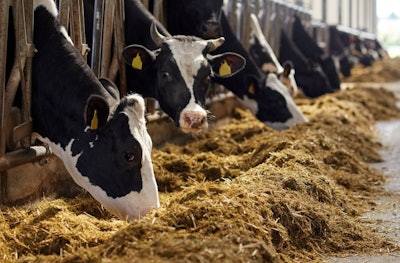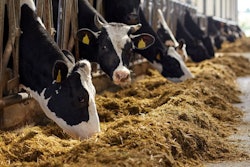
Tannins may reduce emissions, hold other benefits as future feed additive
Another study has concluded that condensed tannins could serve as an effective emission-reducing feed additive — with additional benefits for animal and environmental health. But they say the ingredient still isn’t ready for full-scale commercial production.
Previous research has established that tannins may be capable of reducing enteric emissions of methane from cattle, but the latest paper on the topic takes a broader look at the impact of tannins — quebracho extract, to be specific — on the health and environmental impact of cattle.
“We’re very systems oriented, and we understand that enteric emissions are a major issue with lots of publicity, but that’s not the only source of emissions,” said Aaron Norris, a research assistant in the department of animal science at Texas A&M University, and the lead author on the paper, to be published February in Animal Feed Science and Technology.
If, for example, tannins reduce the digestibility of feed, it could result in an overall increase in emissions despite the reduction in enteric methane, Norris said.
“A lot of times, enteric methane is reduced due to digestibility being reduced — that’s seen over and over in numerous trials,” Norris said.
This latest paper confirms that quebracho tannins reduce the digestibility of feed, especially in higher doses. But the research team found that feeding quebracho tannins shifted the excretion of nitrogen from the cattle’s urine to feces, which could suggest benefits beyond the immediate reduction in emissions by enabling the potential recovery of nitrogen as fertilizer.
Other research, Norris said, suggests tannins have other benefits for cattle, such as increase reproductive efficiency.
Challenges to inclusion in animal feed
But Norris said it’s too early to make any specific recommendation with respect to the use of tannins in animal feed. On one hand, many of the tannins used for research purposes, including the quebracho tannins, would be difficult to produce sustainably in commercial settings, he said.
“You see quebracho in scientific literature a lot, and that’s for consistency,” Norris said, “but most researchers agree it will not be sustainable in a production setting.”
On top of that, the variable nature of tannins have resulted in a problem with reproducing the results seen in research papers.
“It may be a feasible feed additive for some areas in the future, but for right now, there are so many discrepancies that I couldn’t say it’s something that should be utilized at this point in time,” he said.
Tannins, Norris said, are secondary compounds produced when certain plants are under stress — so they may not only vary from one species to the next, but also from one plant to another. This makes producing a consistent product for either research or production difficult.
Norris said researchers will need to get better at denoting the specific characteristics of the tannins used before it will be possible to tease apart when and how tannins should be used in animal feed. He said he thought it could be 10 years before the research determines whether tannins are a viable feed ingredient.
“At least from the cattle perspective, we still have a good bit of work to tease out the nuances that are happening and better understand it,” he said. “I don’t want anyone to get their hopes up that it’s something that will be available and will be a cure-all. In certain scenarios, it can perform very well, but it’s not going to be in every case, and that’s where we have to put the nose to the grindstone and really figure out what’s happening.”













